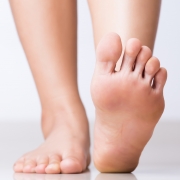Common Causes of Foot Deformities
If your feet are feeling tired and sore lately, it’s no wonder. According to the College of Podiatry, the average person will walk 150,000 miles during the course of their lifetime. In case you’re wondering just how far that is, it’s the equivalent of walking around the world six times. Unfortunately, if you happen to have various types of foot deformities such as hammertoes, bunions, corns, or others, your feet will hurt even more. As to why foot problems such as these and others happen so frequently, here are the most common causes.
Poor-fitting Shoes
More than anything else, poor-fitting shoes tend to contribute to many types of foot deformities. Whether you are wearing shoes that are one size too small or find yourself trying to cram your feet into a pair of narrow high-heels before heading off to work, poor-fitting shoes will almost certainly guarantee you will at some point develop foot deformities such as hammertoes or bunions, the two most commonly associated with this issue.
Medical Conditions
If you have a medical condition that directly impacts your feet, such as diabetes or rheumatoid arthritis, you are at much greater risk of developing various types of foot deformities. For folks who suffer from diabetic neuropathy and thus have nerve damage in their legs and feet that make it hard to feel pain, conditions such as ingrown toenails and bunions can be very common. If left untreated, these problems can lead to severe infections, which is why diabetics and others with certain medical conditions should always have regular foot exams.
Genetics
Unfortunately, it’s sometimes just not in the cards for you to go through life without having some foot issues. If your parents, grandparents, or others in your family have a prior history of dealing with bunions or other foot problems, that may be the reason for your current situation. However, by seeking regular treatment from a skilled podiatrist, most foot deformities can be treated quite successfully.
Along with working closely with your podiatrist, making certain lifestyle changes such as wearing the proper shoes, losing weight, and perhaps switching to a less-stressful form of exercise, such as cycling instead of jogging, you can find yourself ready to start on that seventh trip around the world.





